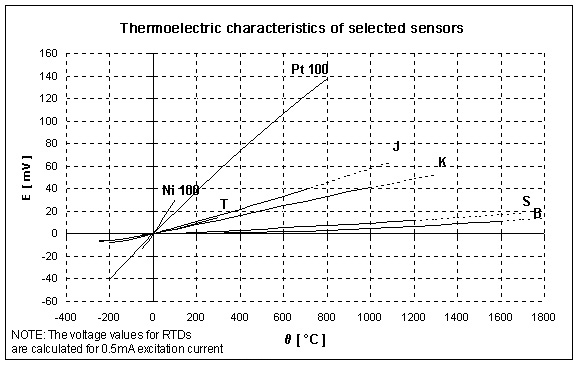Rules for selection of temperature sensors
When selecting sensor for measuring range, there should be choosen one which operating temperature is about 20% higher then the maximum measured temperature (safety margin) and the one that has the highest signal changes ratio to 1 Celsius degree. For example, for measuring range of 0-600°C, the best choose is J thermocuple. Its operating temperature is about 1100°C. It is more then 20%, but is the closest value to 600°C among thermocouples. Also TC K could be used (operting range about 1400°C), but it has smaller voltage changes ratio to 1 C deg and gives lower signal value. It implies higher gain. Therefore also the noise and all adverse affects will be more amplified and transmitted to the output. Using B thermocouple for the aforesaid range of 0-600°C, which signal is about 20 times smaler than the TC J, would be a mistake.
Fo measuring temperature range from minus up to several hundred Celsius degrees the most appropriate seems to be RTD sensors. They are distinguished by a high changes ratio of their resistance to Celsius degree and are especially suitable for such measurements.
Another criterion for selecting a sensor may be resistance to vibration. In places where the sensor is exposed to mechanical shocks, there should be used thermocouples, which are more resistant to vibration then ceramic RTD sensors.
The chart below shows several the most popular sensors. When selecting a sensor for a given range, there should be adhered the principle “the greater signal for the measured temperature, the better”.

